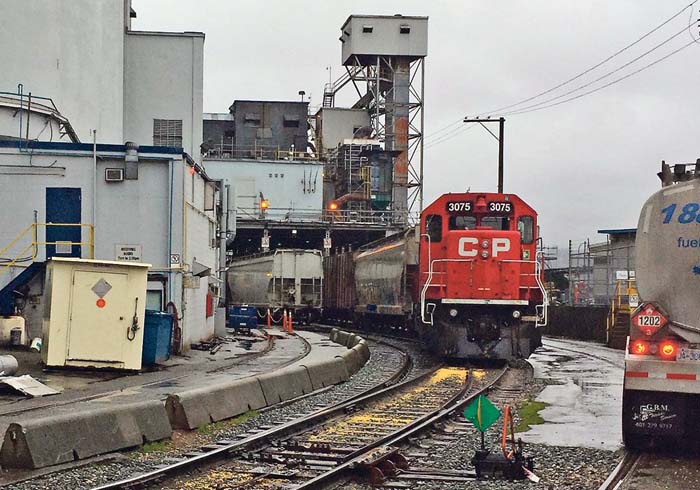

Calgary Alberta - The railway moved 22.5 million tonnes of grain and grain products between 1 Aug 2018 and 31 May 2019 which is 500,000
tonnes more than it's ever done at this point in the year.
CP expects to set a new record in 2018-2019 for volumes of Canadian grain moved in a single crop year.
Joan Hardy, CP's vice-president of sales and marketing, grain, and fertilizers, said CP is on pace to move more grain in the current crop year than ever
before.
"We're about 500,000 tonnes higher than we've ever been before at this point in the crop year," Hardy said.
On a full-crop-year basis, CP's biggest grain years came in 2013-2014 and 2017-2018.
In both of those years, the company moved about 25.9 million tonnes.
"I would say we're on pace to be well beyond that, if the pace of shipping remains at its current level," she said.
Hardy cited focused capital investments in the CP network as a key factor in the company's record-setting grain business.
Improvements to sidings, rail yards, and other components of the Canadian network have "helped to make sure that we are moving the traffic that we need
to," she said.
The deployment of high capacity hopper cars and CP's 8,500 foot High Efficiency Product (HEP) train model has also played a key role.
CP now has more than 1,000 high capacity hopper cars in its fleet and by the end of the calendar year, more than 1,900 new cars are expected to be in
service.
All told, CP has commissioned a total of 5,900 high efficiency hoppers, all of which are expected to be in service by the end of the 2021 calendar
year.
The new hopper cars and shorter, fatter, and lighter than the older cars they will replace, and are capable of carrying about 10 percent more
grain.
They are also easier to load and take less time to unload.
"These cars that can carry 15 percent more volume and 10 percent more load weight are helping us to carry more grain in every car that we move,"
Hardy said.
The HEP train model announced last summer is gaining "significant traction" with CP's shipping customers, the company said in a 4 Jun 2019 news
release.
HEP trains are 8,500 feet, which are 1,500 feet longer than the 7,000 foot unit trains that were previously considered the company's most
efficient.
When comprised exclusively of the shorter and more efficient CP hopper cars, an HEP train will consist of 147 hoppers and will carry as much as 15,000 tonnes
of wheat per train.
A total of seven CP served grain elevators in Western Canada have loop track configurations capable of handling 8,500 foot HEP trains, CP said.
Five additional HEP qualified grain facilities are expected to come into operation this fall, with four others expected to follow in early 2020.
By the end of the 2019-2020 crop year, CP will service at least 16 HEP facilities.
"By the spring of next year, 20 percent of CP's unit train elevator network will be loading the highly efficient 8,500 foot HEP trains, which, coupled
with the new hopper cars, can move up to 44 percent more grain per train," said Hardy.
Hardy said CP is also working on new components for train braking systems that could reduce air leakage and reduce the need to shorten trains in cold winter
temperatures.
More prairie grain than ever is moving west across the Rocky Mountains to the Port of Vancouver.
"There certainly is more grain moving to the West Coast than there has been in the past," Hardy said.
"When we look at the growth in the grain that we're moving, I would say just about all of that growth is moving to the West Coast."
Brian Cross.
provisions in Section 29 of the Canadian
Copyright Modernization Act.

